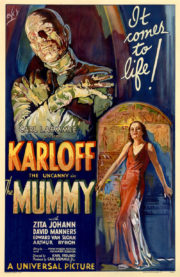A Brush with Darkness: Unveiling “Deliver Us from Evil”
“This is a warning… for you to get out while you still can.” This eerie whisper from “Deliver Us from Evil” encapsulates the chilling premise that underpins this supernatural crime-horror film. Directed by Scott Derrickson and released in 2014, the film weaves together the grit of a police procedural with the dark strokes of demonic possession. We follow NYPD officer Ralph Sarchie (Eric Bana) as he encounters a series of inexplicable crimes that gradually reveal a sinister supernatural force at play. With the aid of an unconventional priest, Mendoza (Édgar Ramírez), Sarchie delves deeper into a world he never believed existed, much less one he’d have to fight against.
Painting in Shadows: Atmosphere, Cinematography, and Sound
The very soul of “Deliver Us from Evil” lies in its ability to drench viewers in an atmosphere thick with dread. Derrickson, known for crafting unsettling ambiances, does not disappoint in utilizing an ominous tone to keep the audience on a tightrope of tension. The trepidation is steeped in every frame, with the film’s cinematography embracing the shadows where evil may lurk. Lighting is used sparingly, allowing darkness to crowd the corners of the scene—inviting viewers to imagine the horrors hiding just out of sight.
The director’s hand is deft in building fear, often opting for an oppressive feeling of impending doom rather than relying on jump scares. Visual effects are tastefully sparse, enhancing the realism of the supernatural encounters when they do burst forth. This realism is accentuated by the film’s grimy, urban backdrop, which provides a stark contrast to the inexplicable demonic events.
Sound is a pivotal character in this horror narrative. The soundtrack, coupled with meticulously layered sound effects, elevates the film’s eerie quality. The use of diegetic sound—such as a child’s toy or an off-kilter song on the radio—provides some of the most chilling moments. Auditory cues are carefully tailored to send shivers down your spine, whether they be the barely-there whispers of malevolent forces or the jarring disturbances of the unseen.
Human Horrors: Characters and Performances
Amidst the supernatural, “Deliver Us from Evil” roots its story in the personal struggles and inner demons of its characters. The performances are the linchpin of believability here, with Eric Bana delivering a grounded yet tortured portrayal of Sarchie. His chemistry with Ramírez’s Mendoza is central to the narrative, bringing a battle-weary humanity to the spiritual showdown. Together, their dynamic explores themes of faith and skepticism.
The supporting cast does not merely accompany but adds depth to the horror, their performances etching out the realism of a city caught in the grips of something beyond comprehension. Their authenticity lends credibility to the horror, preventing it from spiraling into the realm of the far-fetched.
Spirits and Society: Themes and Mechanics
“Deliver Us from Evil” straddles several horror subgenres, predominantly weaving psychological and supernatural strands into its tape
stry. The film’s scares are a mix of visceral shock and psychological unease, favoring a slow burn that culminates in explosive confrontations. Its use of disturbing imagery can be quite effective, playing on primal fears and often invoked religious symbolism, which resonates with real-world cultural fears and beliefs.
There’s a palpable thematic layer that explores the battle between good and evil, both in the physical and spiritual realms. By integrating elements of societal unrest and personal disillusionment, the film cleverly uses horror to question the nature of evil and our responses to it. It probes how facing the external manifestations of darkness can force individuals to confront their inner shadows—often a more daunting task than any supernatural adversary.
In Summation: Facing the Evil Within
“Deliver Us from Evil” is a moody, often unsettling marriage of crime thriller and demonology that doesn’t shy away from the darker crevices of human nature. It doesn’t reinvent the wheel of horror, but its nuanced approach to atmosphere, character-driven storytelling, and palpable tension make it a distinct and engaging entry in the genre. Its grounding in reality, combined with its supernatural flourishes, might particularly appeal to those who enjoy thrillers with a paranormal twist.
Horror aficionados may appreciate the film’s traditional exorcism elements, while casual viewers could find the police procedural angle an accessible hook. Due to some graphic content and intense depictions of evil, viewer discretion is advised. In comparing it with other works, “Deliver Us from Evil” might be seen as a less gleaming cousin to Derrickson’s own “Sinister,” bearing similarities in its investigative horror but with a more urban, gritty palette. Whether watched in the light of day or the shadows of night, this movie’s embrace of the supernatural lurking in the human experience is sure to provoke a shudder.
Despite its strengths, the film is not without its flaws. Some plot points feel underdeveloped, and certain horror clichés are inevitably trodden. However, for those seeking a collision of the natural and supernatural worlds, “Deliver Us from Evil” delivers a dose of darkness worth the descent.




